

In the lush verdure of Indonesia’s island of Java, a young girl wearing baggy sweatpants, a short-sleeved shirt, and a black polka-dotted scarf punts a white ball. Before she came here, 12-year-old Hanifa Karimi had never played soccer in her hometown of Quetta, Pakistan–the city her family had escaped to after generations of living in Afghanistan.
“I love soccer,” says Maliha Ali, another girl from Quetta, who is sitting in Cisarua’s verdant grass, watching her peers kick balls. “In Pakistan, I was a fan of soccer, but I wasn’t given the opportunity to play.” She fondly recalls watching World Cup matches and cheering on Cristiano Ronaldo and Lionel Messi.
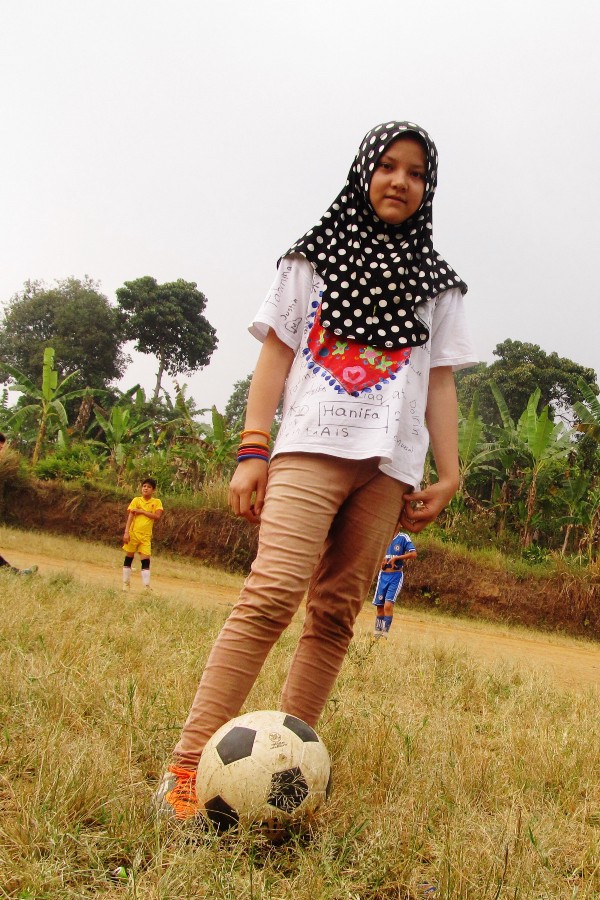
Each week in the Indonesian hillside community of Cisarua, Karimi and Ali assemble on the field with a group of other refugees. Like them, most of the refugees are ethnic Hazaras, a Shia minority group making up nearly 20 percent of Afghanistan’s population. Marked by their distinctive features and adherence to Shia Islam, the Hazaras came under heavy persecution in Afghanistan during the reign of the Taliban in the 1990s. In the years since, violence against the community has not abated; last week, ISIS targeted a Hazara protest in Kabul against a proposed pipeline, killing more than 80 people and injuring over 230 members of the Hazara community.
Although Maliha has two brothers who also play soccer, she never expected to find herself out on the field twice a week. In fact, when Maliha first started playing, her understanding of the rules was dim. She would pick up the ball with her hands, not realizing this was an illegal move. “As we never played in Pakistan, it was difficult for us,” she explains. “[Some] in the Hazara community said girls should not play soccer–usually the girls are bound inside the four walls of the house. But when I came here, I saw the boys playing, so we talked to the coach and asked if we could also play.”
Maliha says that despite initial barriers, the opportunities are now equal between the two groups. “From the start, some parents were not ready to allow the girls to play with the boys, but with the passage of time, their minds changed, and now they don’t have [objections].”
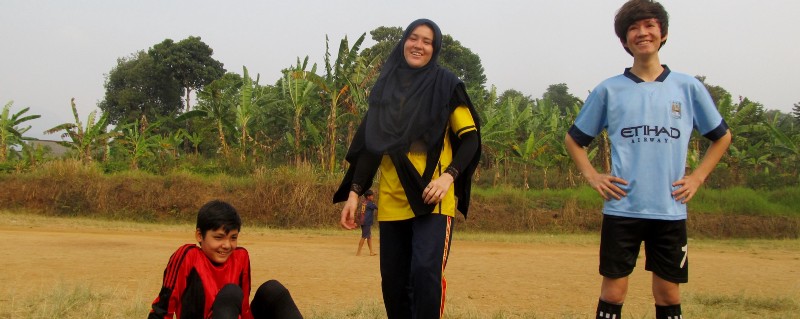
Safety has long proved elusive for the Hazaras, but in Indonesia, the young refugees are haunted by another problem: tedium. Indonesia, home to approximately 14,000 refugees, is a transit country for refugees awaiting a long-term solution. Most arrive to Indonesia by boat, in the hope of resettling permanently in Europe, Australia, or the United States. However, today the bulk of interlopers are known as “stranded refugees,” moored in a country that does not recognize their legal status.
Almost half of Indonesia’s refugee population originates from Afghanistan, followed by Myanmar, Somalia, Iraq, Palestine, and Pakistan. Most are waiting for a legal pathway of refugee resettlement through the UN Refugee Agency (UNHCR), but the process is long, effectively requiring a minimum wait of two years in Indonesia. No one is legally permitted to work or attend school, as Indonesia is not a signatory to the 1951 Refugee Convention. The majority of refugees, locked in a seemingly interminable stasis, sit housebound or resigned. When I ask questions about what they’re experiencing now, most express anxiety about mental atrophy after the loss of critical, unrecoverable years away from their education or productive employment.
Until they receive notification from the UN Refugee Agency about the status of their resettlement application, however, the refugees have few options. In this interim period, only a sport like soccer offers some solace, providing a common ground for disparate cultures to meet, a space to release energy, and a world to carve out a new identity at the end of a long, arduous journey. Perhaps best of all, soccer acclimates refugees to a new environment while preparing them for what’s next.
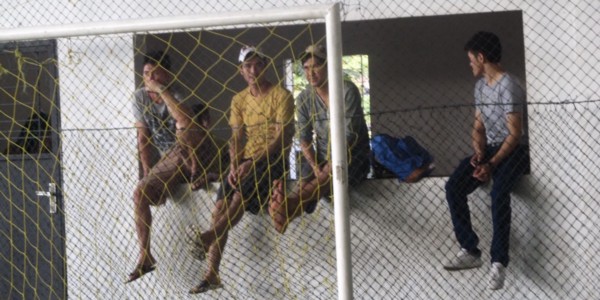
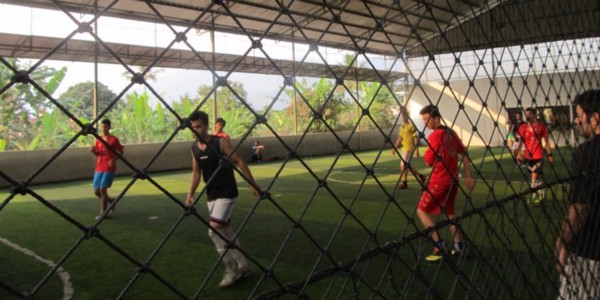
For those uprooted from their home, soccer is a global connector. As Europe contends with waves of refugees, an informal database of soccer associations, clubs, and spaces open to refugees has sprouted up across the continent. In 2015, persecution and conflict displaced 65.3 million individuals from their homelands, deepening the need for such lists. Today, Afghanistan produces the second-largest refugee population in the world, sending 2.7 million fleeing overseas. The majority of Afghan refugees eke out an existence in neighboring countries or in transit countries–86 percent of refugees stay in developing countries like Pakistan, Iran, or Indonesia, often locked in the same region from which they are fleeing. In this environment, soccer can be instrumental in bridging the divide between the past and the future for a refugee child.
For millions of refugees worldwide, sport functions as a connector, introducing newly arrived refugees to locals in their communities. It enables friendships to form, rapport to deepen, and groups to thrive, thereby lessening the effects of social exclusion a refugee experiences on the margins of society. By forging links to the wider community, sports de-emphasizes language barriers by ascribing importance to physical activity rather than verbal expression. As an adaptation and resettlement tool for millions, soccer offers refugees both a universal game and an entry point into society. For these reasons, the Refugee Council of Australia has listed sport as one of the most effective tools to assist refugee resettlement.
With its team-building exercises, soccer has been used as an integration tool for refugees everywhere from Indonesia to South Africa. And the enhanced social harmony that results from building ties and trust on the field has longer-lasting implications off-field. By illustrating a refugee’s positive community engagement, stereotypes are dispelled about refugees being fundamentally distant, violent, unsociable, or closed-off in new societies.
For example, in South Africa’s executive capital Pretoria, Zimbabwean refugees have deployed soccer to reinforce their connection to the host society, build stronger community ties, and overcome xenophobia. In San Diego, California, soccer has also functioned as a method to achieve academic excellence by instilling teamwork and a work ethic among refugees while fostering mentorship. This creates a pathway from the field to the classroom for at-risk refugee children who struggle with linguistic and cultural gaps in host societies.
In San Diego, an organization named YALLA (translating to “Go!” in Arabic) organizes soccer training for youth refugees, which promotes character and personal development. More than this, however, soccer enables newcomers to gain a foothold in a society that has not yet embraced them. To overcome socioeconomic barriers, ranging from limited English proficiency to lower educational and employment achievement, the game of soccer places everyone on equal ground–literally.
“Soccer is (the) best therapy,” says YALLA’s founder Mark Kabban. “They have an hour or two to forget about everything and just be kids.”
For refugees without anchors in their new societies, or who are fleeing broken families and societies, the soccer field offers a place where they can easily locate a new social identity in a foreign setting. Soccer also relieves young refugees of stress and diminishes everyday tedium associated with waiting in a seemingly stalled resettlement process. For some female refugees from places like Afghanistan or northwest Pakistan, the field gives them their first taste of playing soccer at all, as they were denied the ability to play the sport in their home country.
“Soccer is that universal language. When you have a kid that has fled their country, has had a horrible experience, comes to this strange country, the one thing they understand is soccer,” says Luma Mufleh, the founder of the Fugees Academy, an organization that runs a youth refugee soccer program in the United States. “It’s always been an escape for them. In the refugee camps, some of them would bundle up plastic bags to make a soccer ball so they could play.”
The head coach from YALLA, William Mosqueda, says: “It really exposes them to kind of trusting again and working within a group again and just having the chance to be a kid.”
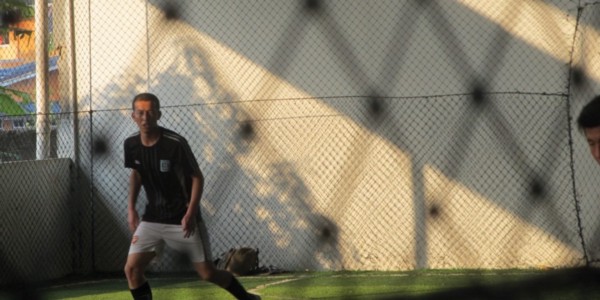
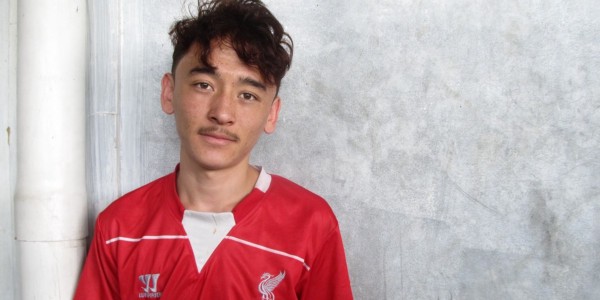
Ali is a deft sportsman. He is also among the 60 percent of unaccompanied minors in Indonesia who are Hazara. The 17-year-old came alone to Indonesia in June 2013, after leaving Afghanistan’s southeastern Ghazni province when his family began to receive death threats. “It’s difficult because it was my time for studying, to be with my friends, to be with my family. But I was compelled to leave my country,” Ali tells me before a soccer game in Cisarua.
“My father said, “‘You must go; it’s too dangerous for you here.’ And I left,” he says.
Ali boarded a flight to the capital Kabul, then crossed over to Quetta in neighboring Pakistan, where he spent some time in a hotel room until he found an agent to help him go overseas. “I told the agent I needed to go to Indonesia.” Ali then took a plane to New Delhi, followed by another flight to Kuala Lumpur. From Malaysia, he set himself on a rickety boat to Indonesia, arriving at a port that he’s long forgotten the name of, as the maritime journey was engulfed in darkness.
When I ask Ali how playing soccer in Indonesia differed from playing soccer back home in Afghanistan, he says, “When I came here, there were no facilities for soccer [in Indonesia]. There was no ground for playing and no soccer team.”
Cisarua, located two hours outside of Jakarta, was once a mere stopover en route to Australia’s Christmas Island. It was certainly an unusual endpoint for a 17-year-old Afghan to find himself. A few years ago, thanks to its affordable housing and proximity to the capital, Cisarua became a popular staging ground for refugees seeking boat journeys to Australia. However, since Australia’s enforced mandatory offshore detention, all refugees who now attempt boat journeys are swiftly stopped and sent back. In this climate, Ali–like many of his peers–have resolved only to seek legal pathways.
Today, waiting for the fateful response from the UN Refugee Agency determining his next destination, Ali spends most of his days in between two activities that will prepare him for the next chapter: soccer games and English classes. Each time his mother phones him, Ali is asked: When are you going to a safe country? How is your life in Indonesia?
Yet Ali knows he has only crossed the midpoint of his journey. For now, soccer matches are a welcome reprieve from the monotony on the Javanese island. Ali’s relationship with soccer blossomed at the age of 15, when he first began playing the sport. “In the first few months, I wasn’t very good,” he says, but eventually he took the top score at his school back in Afghanistan.
However, Ali hasn’t attended school since he left Afghanistan, leaving his education paused at ninth grade. Now he just takes a one-hour private English class to prepare him for life after resettlement.
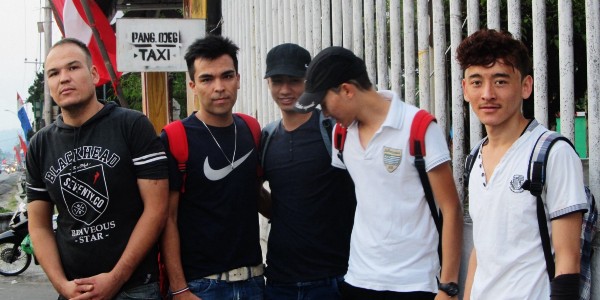
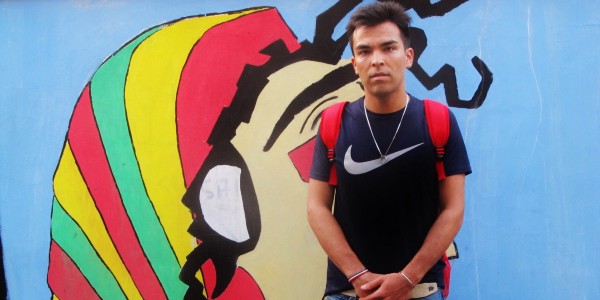
With children accounting for 51 percent of the global refugee population, soccer is a particularly notable integration tool for young people, who use it as an adaptation tool as much as a recreational salve.
For Maliha, life on the fields is a psychological gift, distracting her from the tedium of waiting for progress on her family’s resettlement application. “When you enter the pitch, you forget all your worries,” Maliha says. “You just concentrate on the game.”
She continues: “Being a refugee is stressful because you don’t have money or work [in Indonesia]. You are just at home all the time. You have so much time when you are just sitting there thinking about your future–when it might come, when it might not come.”
“It’s useful for refugees to play soccer, both physically and mentally, because they face hardships,” adds the head coach in Cisarua, Sadiq Akbari, a 30-year-old from Afghanistan’s Wardak province. “When they are here, they are happy and forget everything.” Akbari was raised in Arak, Iran, where he spent 12 years training another refugee soccer team.
“There is a big difference between playing soccer in Afghanistan, Iran, and Indonesia–cost,” he says. “Not all the refugees have the money to reach the grounds, so they walk. Sometimes for more than 30 minutes in the rain,” he explains. Playing soccer is not free in Indonesia; players pool together money to rent out a field for an hour or two a few times a week.
Still, the appeal of the game is obvious. “It’s a universal game,” says 22-year-old Ahmed Parsa from Herat, Afghanistan, standing on the sidelines watching the game unfold. “The only difference here is we pay for the soccer field, but in Afghanistan no one is paying.” Parsa is also a Hazara refugee, who recalls how ethnic and sectarian divisions in Afghanistan reproduced themselves on the field. “[The fight normally] started in the game, but it made its way out of the game,” he recounts. During one particularly vicious incident, Parsa remembers a brawl erupted between a Tajik team and a Hazara team, pitting the two ethnic communities against one another and leaving the field tense. Here in Indonesia, he seldom encounters that level of intensity on the field, and he is grateful.
Morteza Nayebi, a 22-year-old Hazara refugee from Afghanistan’s central Daykundi province, says that refugees sometimes hold a stronger repertoire of skills on the field compared to players in host societies. Nayebi spent 20 years as a refugee in Tehran, Iran, before he came to Indonesia. “Actually, the quality of soccer in Iran is better–you cannot compare,” he says with a touch of wistful nostalgia. Still, for a refugee, the main draw of another country is not the quality of the sports players, but the promise of safety, he explains. “In Iran, the problem was that I did not have any documents. There was also discrimination from the government and the people against [Afghan] refugees. When you don’t have any documents, you are a third category,” he says, pointing out that individuals in his situation are seldom treated like human beings.
Time moves slowly for Nayebi between soccer games, since he is barred from taking up work or formal schooling. “I want to finish my refugee life and leave this kind of living,” he says, as we walk away from the soccer field.
Still, all the refugees in Cisarua agree that there are myriad physical, health, and social benefits of refugees taking up soccer. The sport builds social cohesion in fragmented communities; gives refugees a chance to focus on their physical and mental well-being; establishes trust between different groups; and erodes cultural barriers. In one U.K. research report, it was mentioned that “team sport crashes through barriers,” that sports speak an “international language,” and that the game ultimately enables people to “participate and interact” despite the fact that “language differences may make verbal communication difficult.”
Across Europe, grassroots sports teams are cropping up to serve newly arrived refugees. FC Lampedusa in Hamburg, Germany, is one example of a refugee-only soccer team, originally formed to serve West African migrants but now open to any refugee or migrant aged 16 or above who finds himself unmoored in the German city. In Lyon, France, asylum seekers have likewise banded together to form a soccer club, while in Glasgow, Scotland, refugees have joined mixed-citizenship teams in a nod to greater inclusivity and empathy on the soccer field. Likewise, in 2007, Soccer Without Borders began using soccer as a youth development scheme to welcome refugees entering the United States.
Back in Cisarua, Maliha is watching her community pack up the balls on the field when I ask her: “What’s your favorite thing about soccer?”
She replies quickly: “Teamwork.”
“Teamwork is very important in every part of life, especially in soccer,” Maliha adds, throwing the ball up in the air. “You cannot win the game only by yourself, you have to play for your team.”


How We Get To Next was a magazine that explored the future of science, technology, and culture from 2014 to 2019. This article is part of our Playing the Field section, which examines how innovations in sports affect the wider world. Click the logo to read more.
